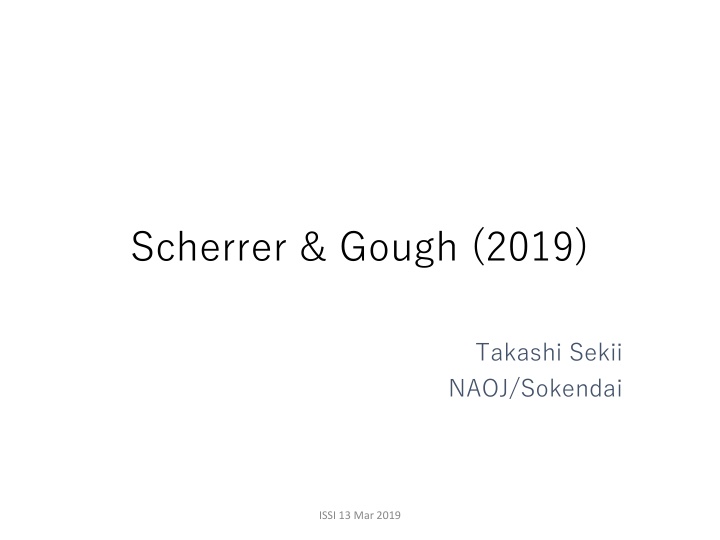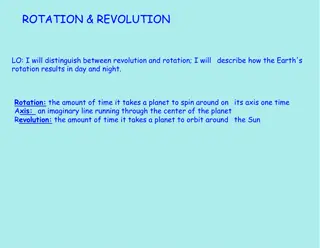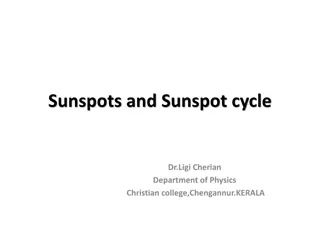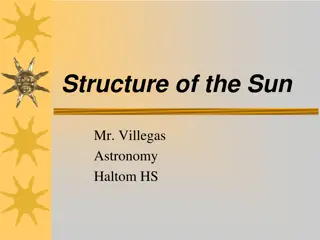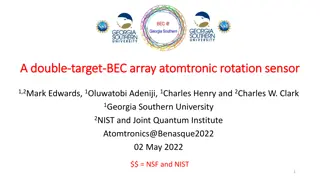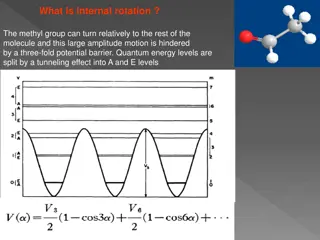Sun's Rotation Rate Analysis: Inconsistencies and Explanations
Analyzing inconsistencies in the Sun's core rotation rate detection, discussing possible explanations, and presenting evidence against previous findings by Fossat et al. and Gough (1993).
Download Presentation

Please find below an Image/Link to download the presentation.
The content on the website is provided AS IS for your information and personal use only. It may not be sold, licensed, or shared on other websites without obtaining consent from the author.If you encounter any issues during the download, it is possible that the publisher has removed the file from their server.
You are allowed to download the files provided on this website for personal or commercial use, subject to the condition that they are used lawfully. All files are the property of their respective owners.
The content on the website is provided AS IS for your information and personal use only. It may not be sold, licensed, or shared on other websites without obtaining consent from the author.
E N D
Presentation Transcript
Scherrer & Gough (2019) Takashi Sekii NAOJ/Sokendai ISSI 13 Mar 2019
This brief presentation is about Introducing Scherrer & Gough (2019) Submitted to ApJ Entitled How fast is the Sun spinning? ISSI 13 Mar 2019
Structure of the paper In response to the inference made by Fossat et al (2017)[F17] Their assumed detection of l=1 modes leads to inconsistency with GOLF data Maybe these were l=2 except... Actually, l=1 modes should not be detected anyway A few datasets were analysed following the same procedure, with no robust detection ISSI 13 Mar 2019
Comment on the inference made by F17 F17 say: The 3 peaks at 210 nHz, 630 nHz and 1260 nHz are due to dipole and quadrupole modes Assuming that the envelope ( p-mode ) rotation rate is 433.5 nHz, the core rate is 1277 nHz ISSI 13 Mar 2019
Comment on the inference made by F17 Scherrer & Gough say: Their core rate is highly inconsistent with the GOLF(!) p-mode splitting data If the lowest detected modes are l=2, the core rate would be 789 nHz which is more consistent ISSI 13 Mar 2019
Comment on the inference made by F17 Scherrer & Gough say: Their core rate is highly inconsistent with the GOLF(!) p-mode splitting data If the lowest detected modes are l=2, the core rate would be 789 nHz which is more consistent Maybe 394 nHz is possible too If the 210 nHz peak corresponds to (l,m)=(2,2)? Even these explains the 210 nHz peak only, not the remaining two peaks ISSI 13 Mar 2019
More evidence against F17 Elsworth et al (1995) The core of the Sun rotates no faster than the rest of the radiative interior Etc, etc ISSI 13 Mar 2019
Detection of dipole g modes? Gough (1993), often referred to as Les Houches note , discusses aspherical perturbation theory Keneddy, Jeferies & Hill (1993) pointed out, based on Gough (1993), that Even-degree g modes produce p-mode frequency modulation But not odd-degree g modes, to the leading order So, F17 could not have detected dipole modes ISSI 13 Mar 2019
Detection of dipole g modes? Appendix of Scherrer & Gough Does not seem to have the right parity ISSI 13 Mar 2019
Detection of dipole g modes? I decided to try to reproduce (A9) In the hope that I will be able to say At the time of writing, there are multiple discrepancies between (A9) and my formula However All the terms in my formula have the right parity There is one term very similar to the last term in (A9), but with the right parity ISSI 13 Mar 2019
Detection of dipole g modes? Appendix of Scherrer & Gough ISSI 13 Mar 2019
Detection of dipole g modes? I decided to try to reproduce (A9) At the time of writing, there are multiple discrepancies between (A9) and my formula However All the terms in my formula have the right parity There is one term very similar to the suspected term, but with the right parity I am reasonably convinced that the conclusion is right ISSI 13 Mar 2019
Analyses following F17 GOLF data Analysis with a better cadence told a different story Sensitive also to the start times of data and the window size (the canonical is 4 hours) MDI, HMI, GONG, BiSON Peaks are seen, but not robust 60-sec cadence GOLF data 80-sec cadence GOLF data ISSI 13 Mar 2019
Analyses following F17 GOLF data Analysis with a better cadence told a different story Sensitive also to the start times of data and the window size (the canonical is 4 hours) MDI, HMI, GONG, BiSON Peaks are seen, but not robust ISSI 13 Mar 2019
Conclusion by Scherrer & Gough ...the conclusions of Fossat et al. are premature ISSI 13 Mar 2019
